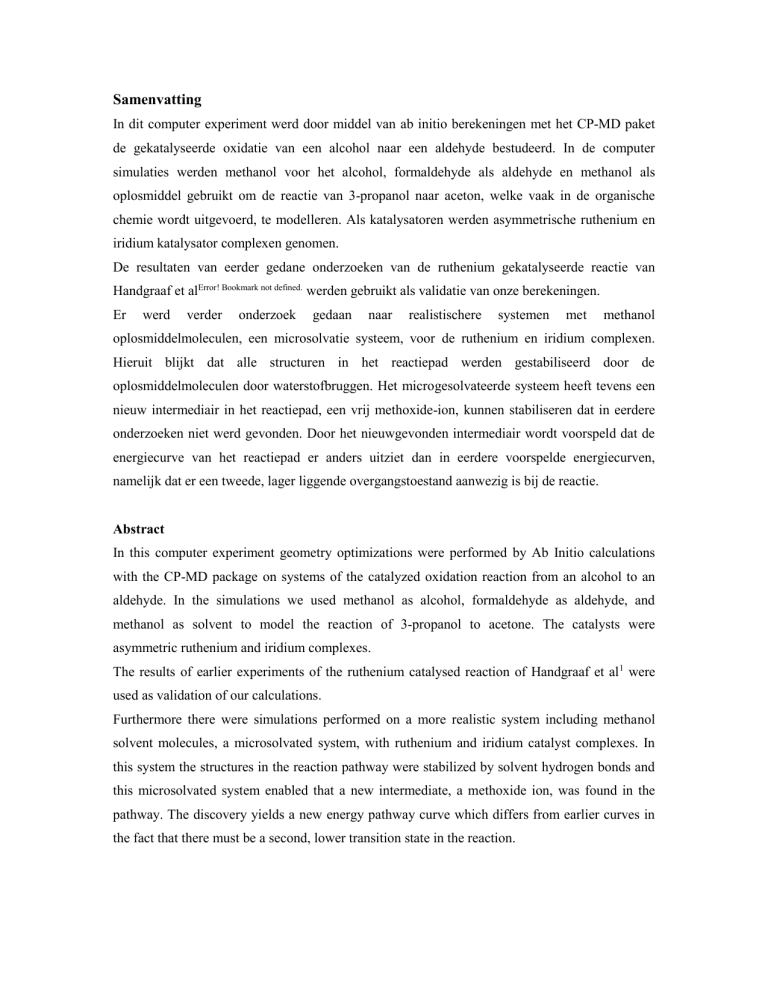
Samenvatting
In dit computer experiment werd door middel van ab initio berekeningen met het CP-MD paket
de gekatalyseerde oxidatie van een alcohol naar een aldehyde bestudeerd. In de computer
simulaties werden methanol voor het alcohol, formaldehyde als aldehyde en methanol als
oplosmiddel gebruikt om de reactie van 3-propanol naar aceton, welke vaak in de organische
chemie wordt uitgevoerd, te modelleren. Als katalysatoren werden asymmetrische ruthenium en
iridium katalysator complexen genomen.
De resultaten van eerder gedane onderzoeken van de ruthenium gekatalyseerde reactie van
Handgraaf et alError! Bookmark not defined. werden gebruikt als validatie van onze berekeningen.
Er
werd
verder
onderzoek
gedaan
naar
realistischere
systemen
met
methanol
oplosmiddelmoleculen, een microsolvatie systeem, voor de ruthenium en iridium complexen.
Hieruit blijkt dat alle structuren in het reactiepad werden gestabiliseerd door de
oplosmiddelmoleculen door waterstofbruggen. Het microgesolvateerde systeem heeft tevens een
nieuw intermediair in het reactiepad, een vrij methoxide-ion, kunnen stabiliseren dat in eerdere
onderzoeken niet werd gevonden. Door het nieuwgevonden intermediair wordt voorspeld dat de
energiecurve van het reactiepad er anders uitziet dan in eerdere voorspelde energiecurven,
namelijk dat er een tweede, lager liggende overgangstoestand aanwezig is bij de reactie.
Abstract
In this computer experiment geometry optimizations were performed by Ab Initio calculations
with the CP-MD package on systems of the catalyzed oxidation reaction from an alcohol to an
aldehyde. In the simulations we used methanol as alcohol, formaldehyde as aldehyde, and
methanol as solvent to model the reaction of 3-propanol to acetone. The catalysts were
asymmetric ruthenium and iridium complexes.
The results of earlier experiments of the ruthenium catalysed reaction of Handgraaf et al1 were
used as validation of our calculations.
Furthermore there were simulations performed on a more realistic system including methanol
solvent molecules, a microsolvated system, with ruthenium and iridium catalyst complexes. In
this system the structures in the reaction pathway were stabilized by solvent hydrogen bonds and
this microsolvated system enabled that a new intermediate, a methoxide ion, was found in the
pathway. The discovery yields a new energy pathway curve which differs from earlier curves in
the fact that there must be a second, lower transition state in the reaction.












